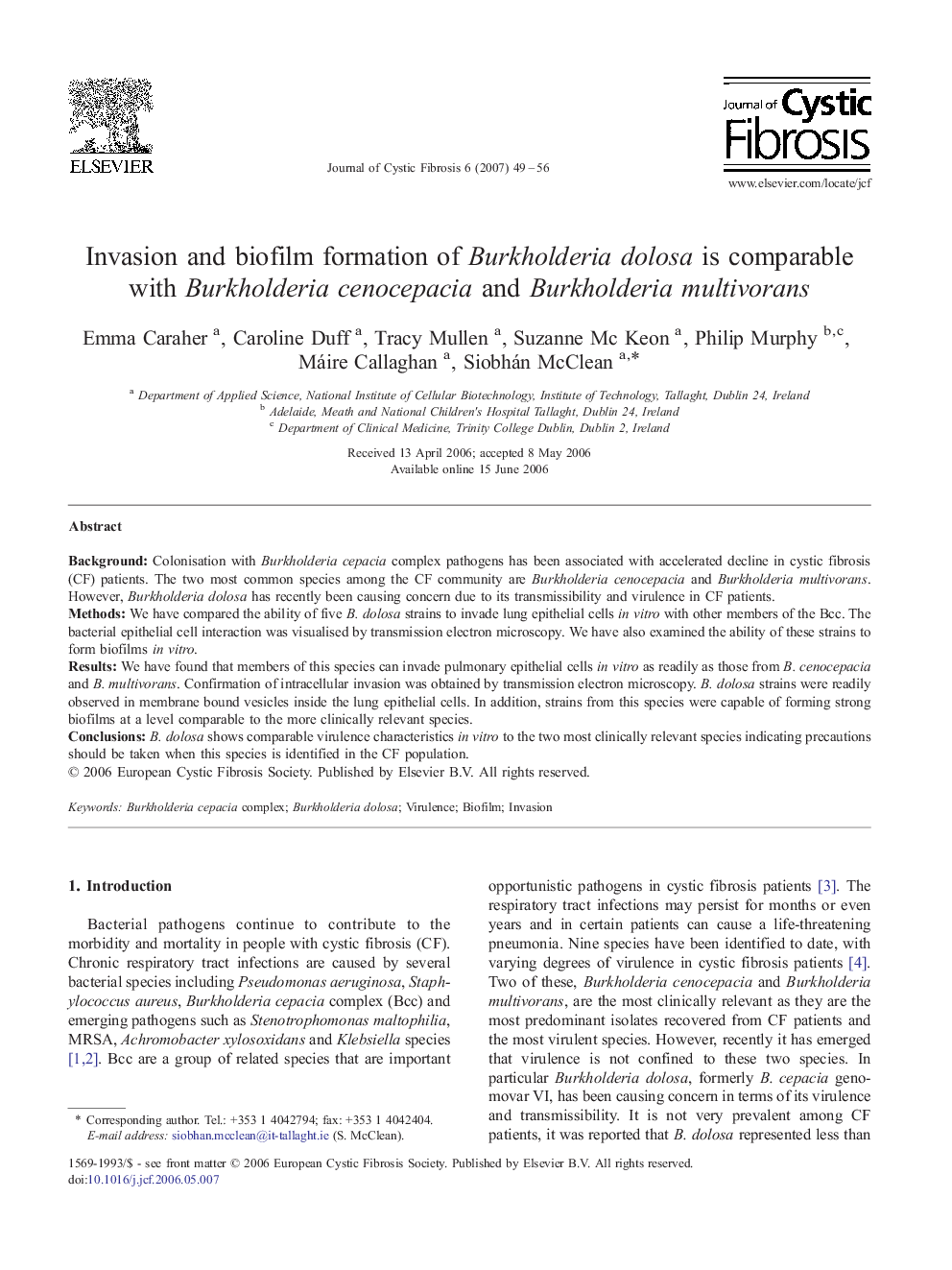| Article ID | Journal | Published Year | Pages | File Type |
|---|---|---|---|---|
| 4209835 | Journal of Cystic Fibrosis | 2007 | 8 Pages |
BackgroundColonisation with Burkholderia cepacia complex pathogens has been associated with accelerated decline in cystic fibrosis (CF) patients. The two most common species among the CF community are Burkholderia cenocepacia and Burkholderia multivorans. However, Burkholderia dolosa has recently been causing concern due to its transmissibility and virulence in CF patients.MethodsWe have compared the ability of five B. dolosa strains to invade lung epithelial cells in vitro with other members of the Bcc. The bacterial epithelial cell interaction was visualised by transmission electron microscopy. We have also examined the ability of these strains to form biofilms in vitro.ResultsWe have found that members of this species can invade pulmonary epithelial cells in vitro as readily as those from B. cenocepacia and B. multivorans. Confirmation of intracellular invasion was obtained by transmission electron microscopy. B. dolosa strains were readily observed in membrane bound vesicles inside the lung epithelial cells. In addition, strains from this species were capable of forming strong biofilms at a level comparable to the more clinically relevant species.ConclusionsB. dolosa shows comparable virulence characteristics in vitro to the two most clinically relevant species indicating precautions should be taken when this species is identified in the CF population.
